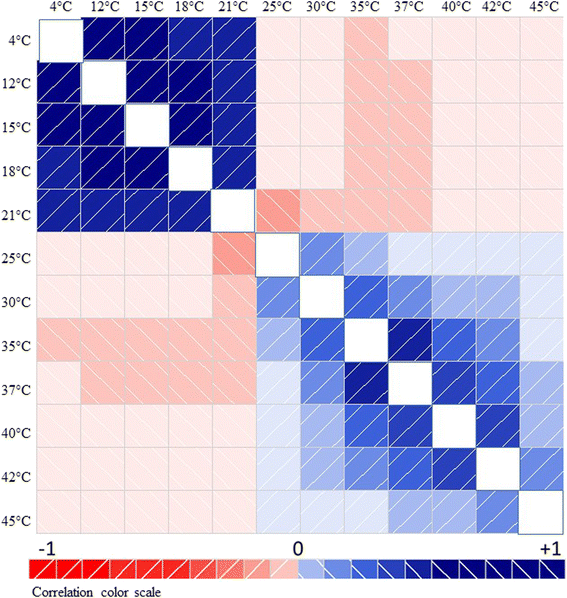Distribution and impact of yeast thermal tolerance permissive for mammalian infection
- PMID: 25762372
- PMCID: PMC4381509
- DOI: 10.1186/s12915-015-0127-3
Distribution and impact of yeast thermal tolerance permissive for mammalian infection
Abstract
Background: From the viewpoint of fungal virulence in mammals, thermal tolerance can be defined as the ability to grow in the 35°C to 40°C range, which is essential for inhabiting these hosts.
Results: We used archival information in a fungal collection to analyze the relationship between thermal tolerance and genetic background for over 4,289 yeast strains belonging to 1,054 species. Fungal genetic relationships were inferred from hierarchical trees based on pairwise alignments using the rRNA internal transcribed spacer and large subunit rDNA (LSU) sequences. In addition, we searched for correlations between thermal tolerance and other archival information including antifungal susceptibility, carbon sources, and fermentative capacity. Thermal tolerance for growth at mammalian temperatures was not monophyletic, with thermally tolerant species being interspersed among families that include closely related species that are not thermal tolerant. Thermal tolerance and resistance to antifungal drugs were not correlated, suggesting that these two properties evolved independently. Nevertheless, the ability to grow at higher temperatures did correlate with origin from lower geographic latitudes, capacity for fermentation and assimilation of certain carbon sources.
Conclusions: Thermal tolerance was significantly more common among ascomycetous than basidiomycetous yeasts, suggesting an explanation for the preponderance of ascomycetous yeasts among human pathogenic fungi. Analysis of strain maximum tolerable temperature as a function of collection time suggested that basidiomycetous yeasts are rapidly adapting to global warming. The analysis identified genera with a high prevalence of the thermal-tolerant species that could serve as sources of emerging pathogenic fungi.
Figures





References
Publication types
MeSH terms
Substances
Grants and funding
LinkOut - more resources
Full Text Sources
Other Literature Sources
Medical
Molecular Biology Databases

